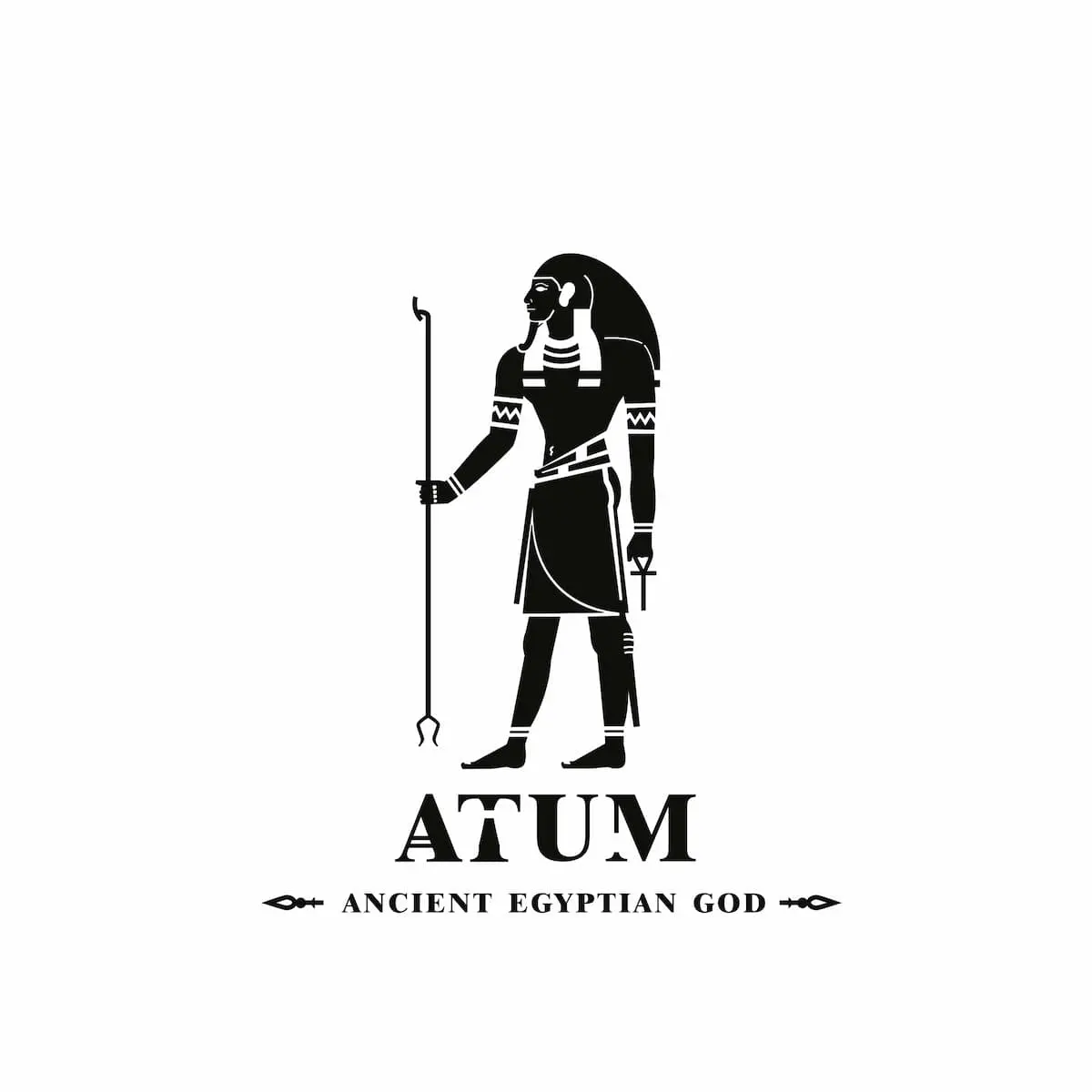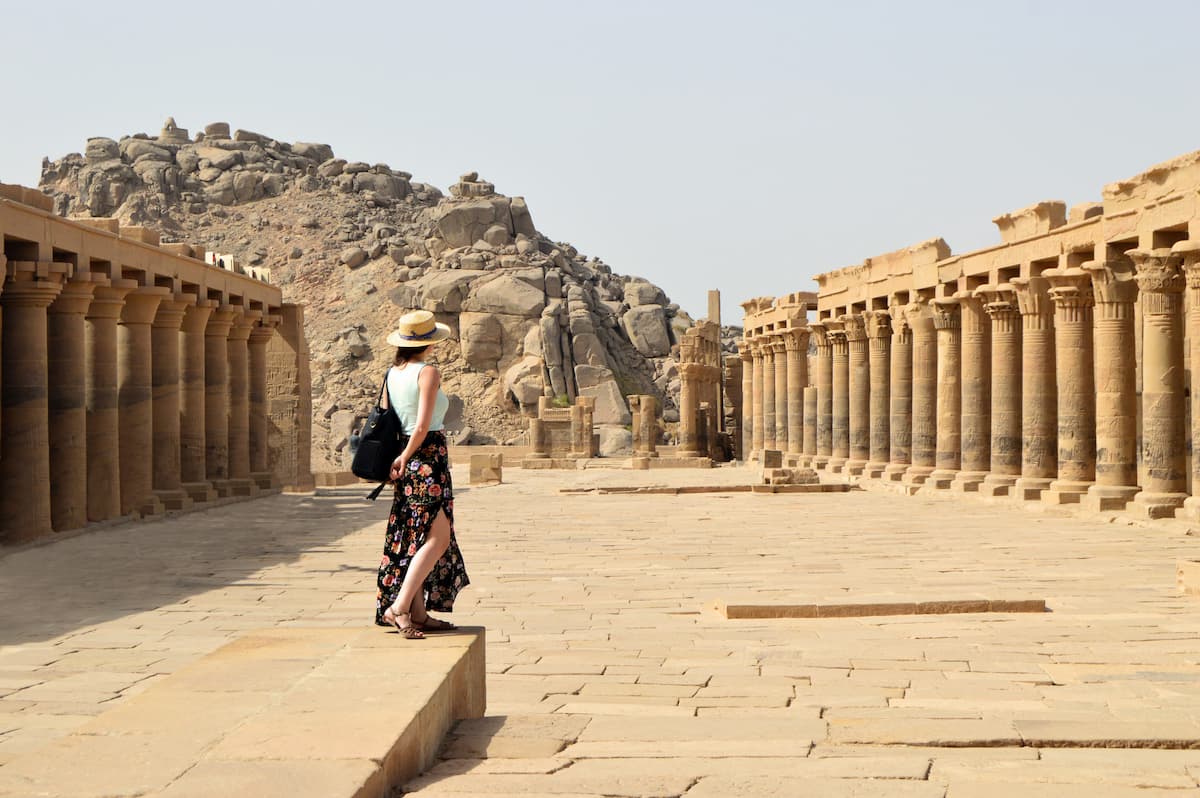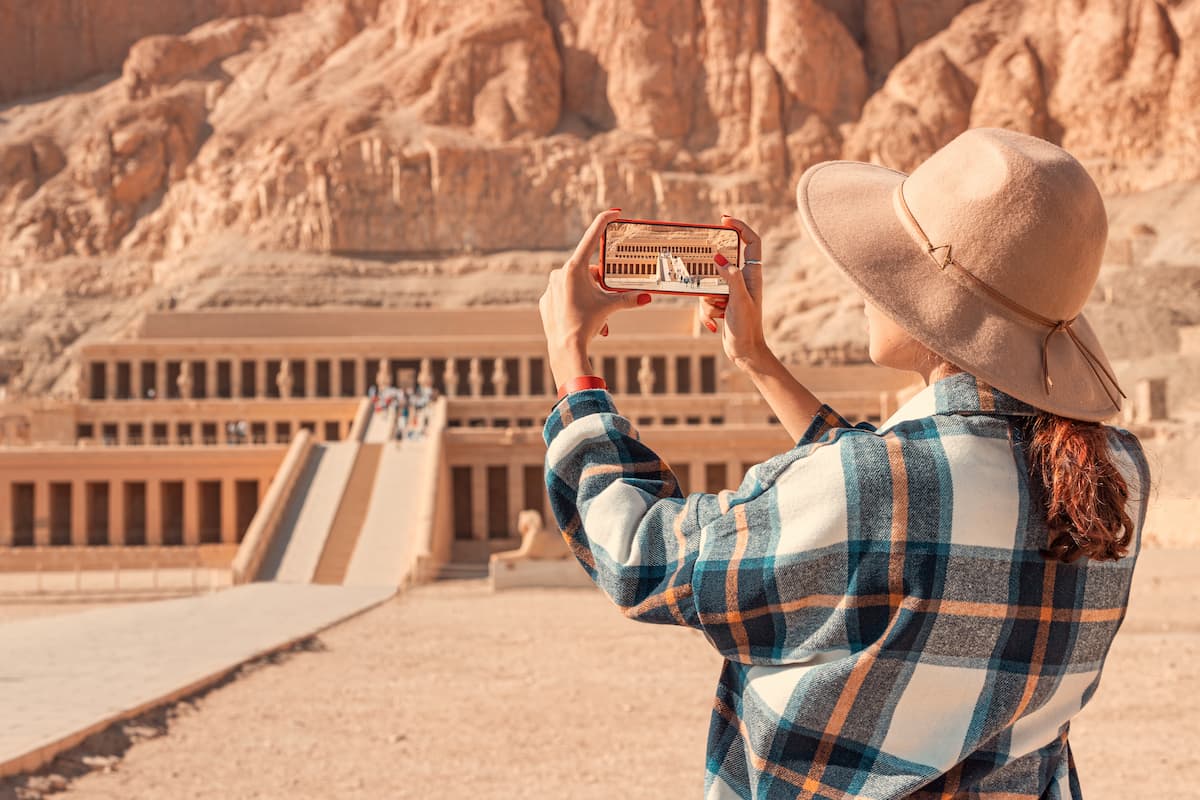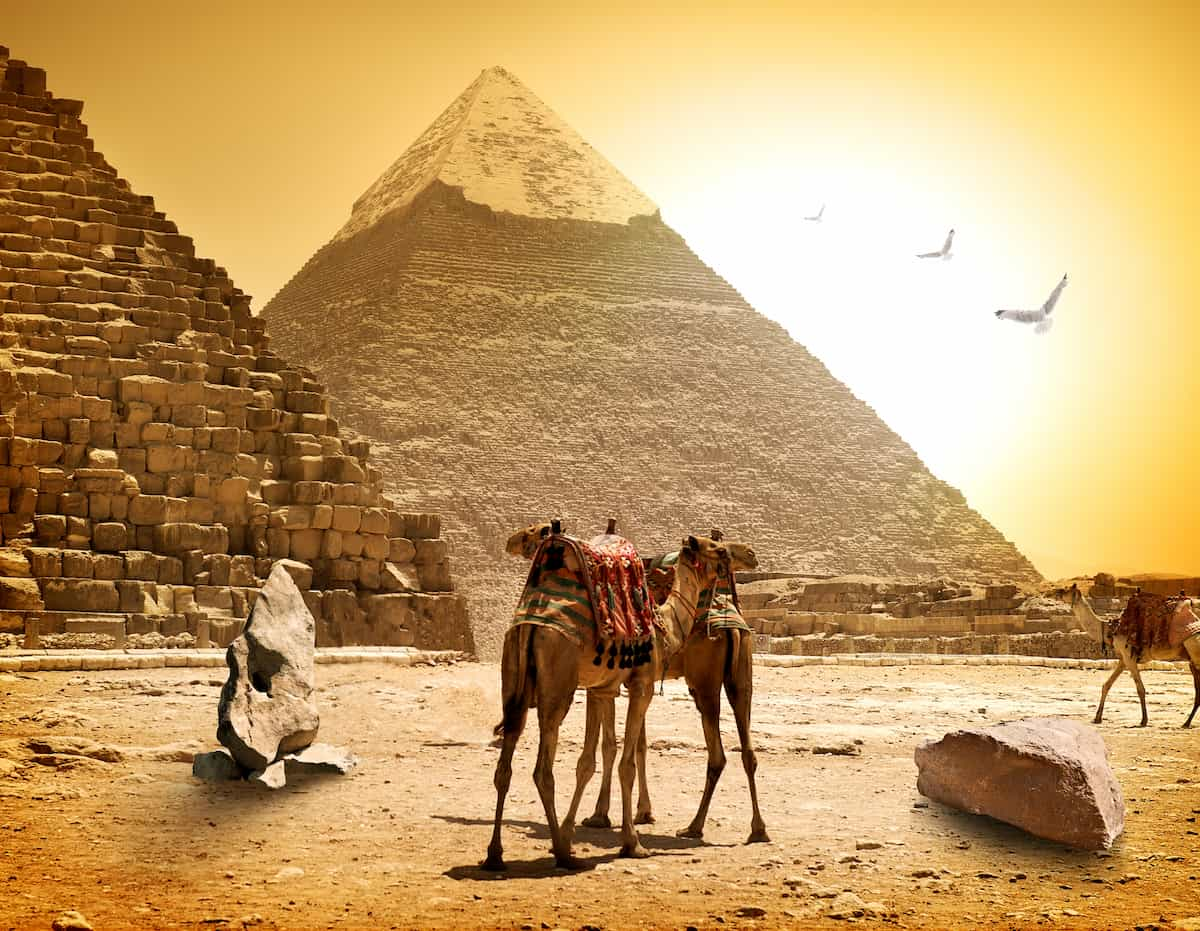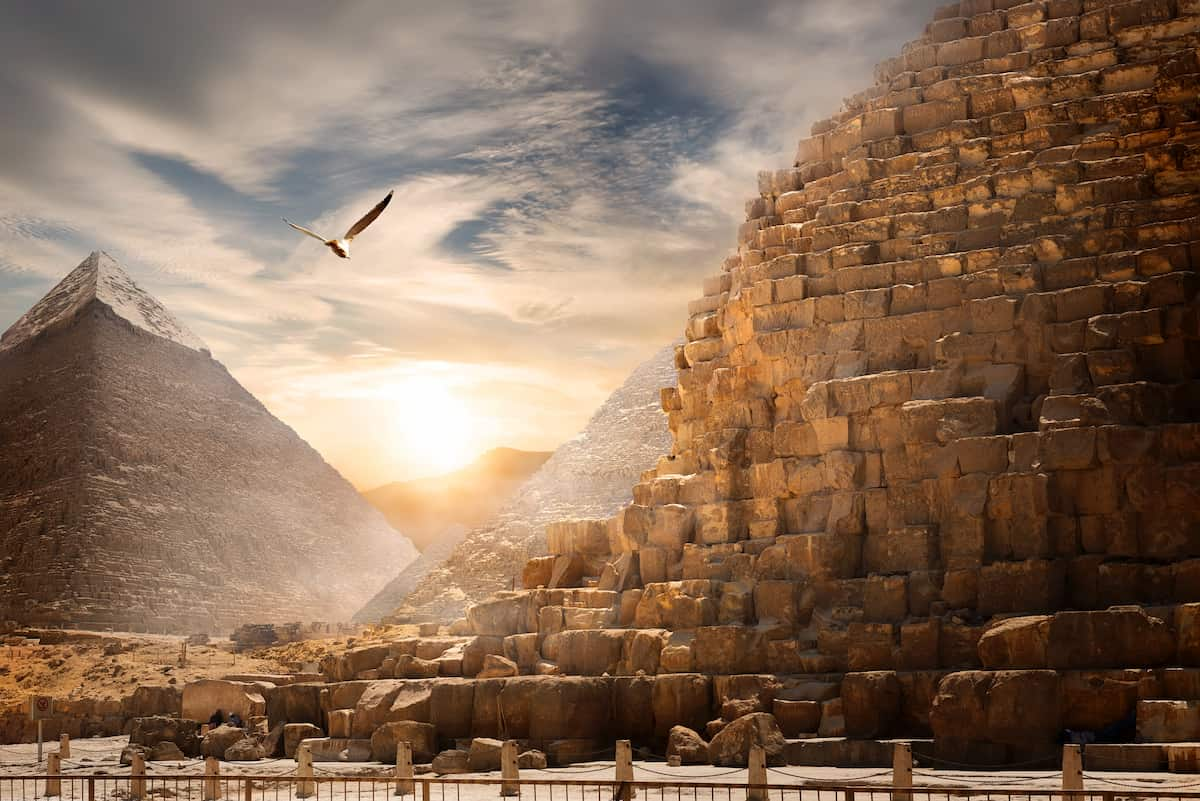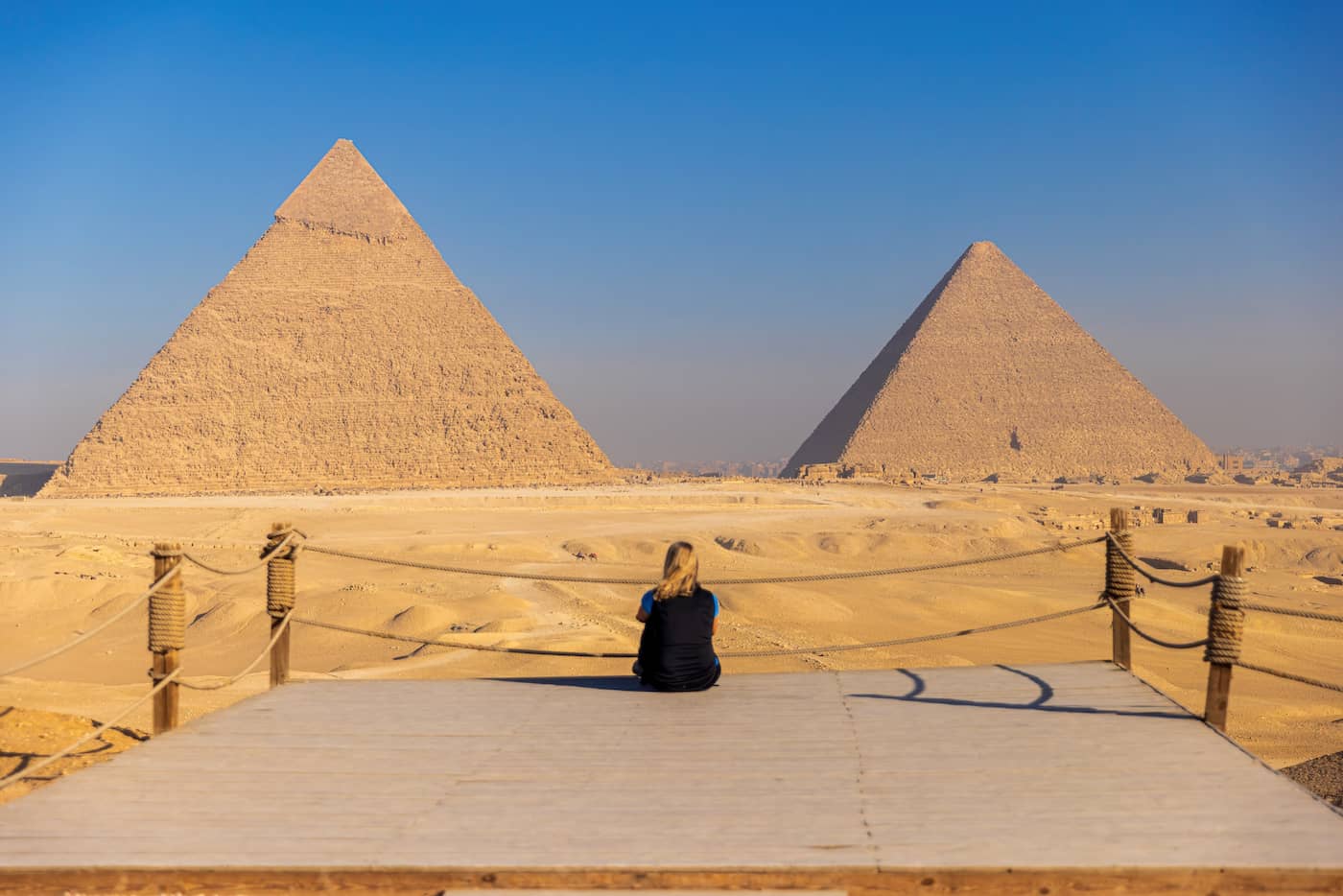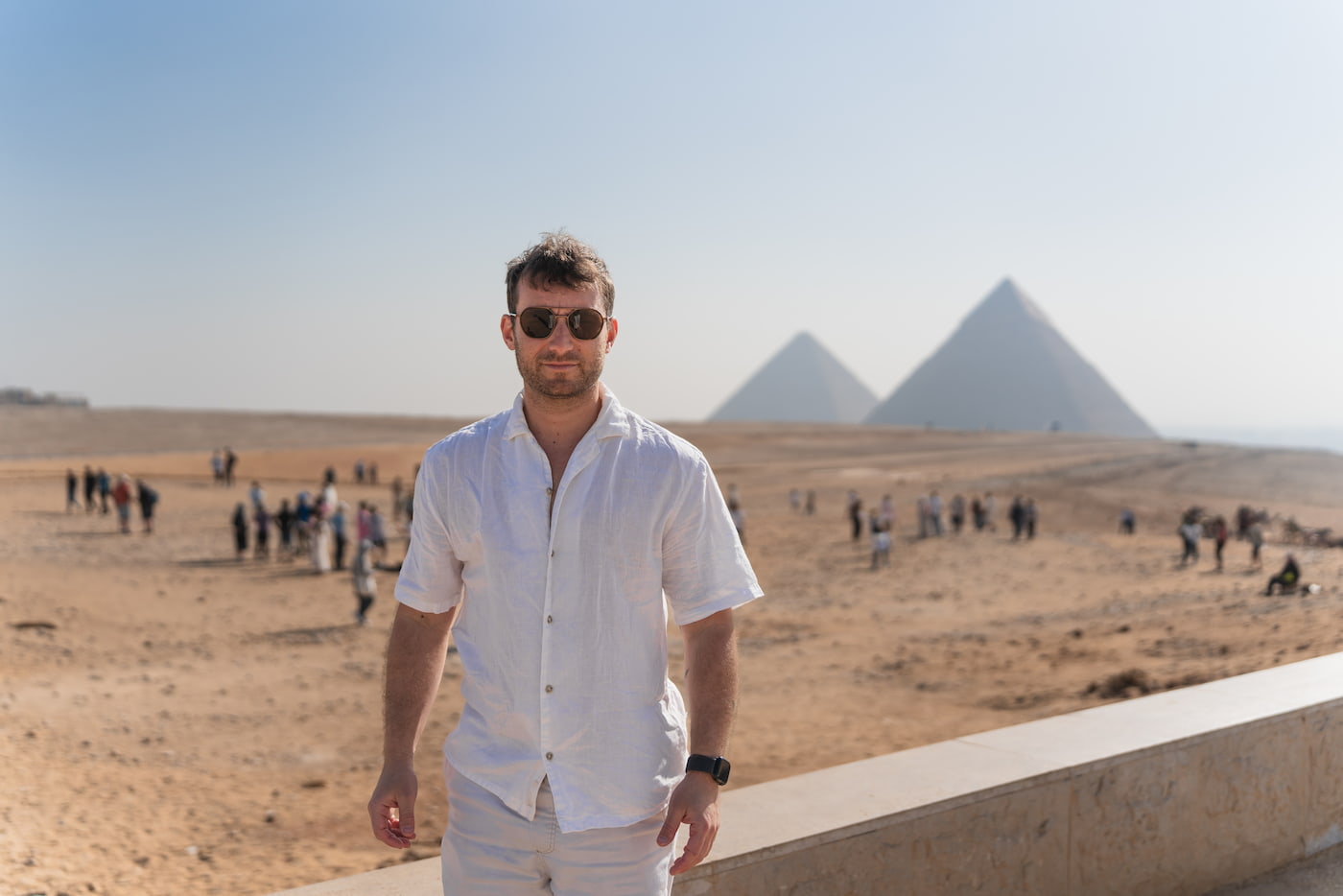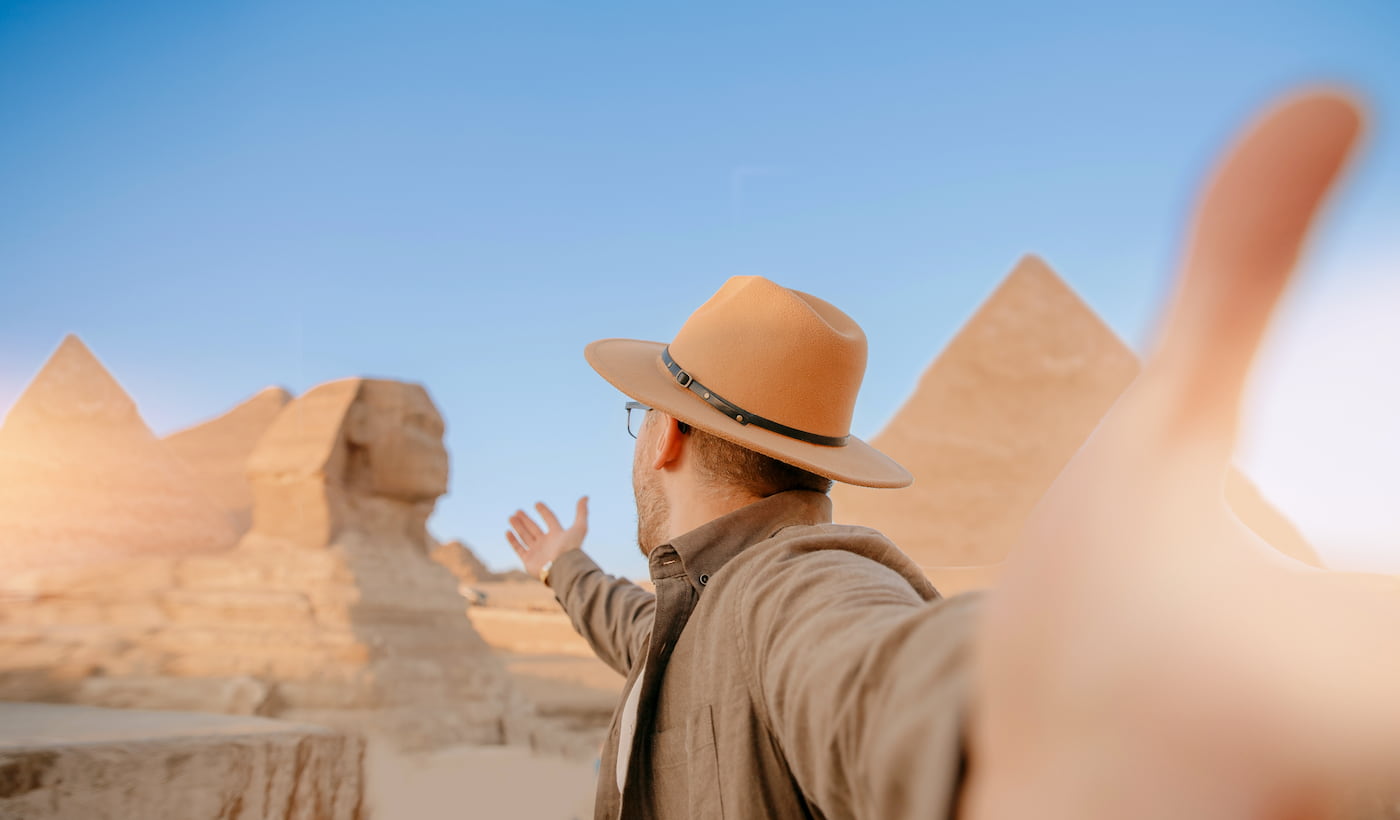Atum – The Egyptian Creator God of Heliopolis
Who was Atum in ancient Egypt’s mythology? Atum Egyptian God, was the god in ancient Egypt’s mythology. He was revered as one of the primary deities in Heliopolis and was self-created. He has his legation emerging as one of the points of existence with the rise of this interesting god. The discourse of the temples of Atum in Heliopolis introduced him as the first god, the grand over all the gods, the universe, and life. For other, more thorough details and variations, please consider reading the link below.
Traditionally, Atum was born from the chaos of the primeval state of creation(known as Nut). He was the first being who emerged from that boundless chaos, and he later organized the universe into its current form. He had loved the universe, but in the skies the energies did not combine, for which he created two other deities, Shu(air) and Tefnut(water); so that when combined, the energies were complementary and thus a new formation was born.
Being the cosmic designer, Atum Egyptian God, commanded the creation of such a first pair of deities who would also be married to Shu, the God of Air, and Tefnu, the Goddess of Moisture. This furthered the thought and continued the chain of creation when the Ennead, the nine who create any individuals, of Heliopolis was established.
The self-sustaining Atum, the eternal wheel with no beginning nor end, was held in great respect and was acknowledged in the religious, kingly, and philosophical domains of the ancient Egyptians alike.
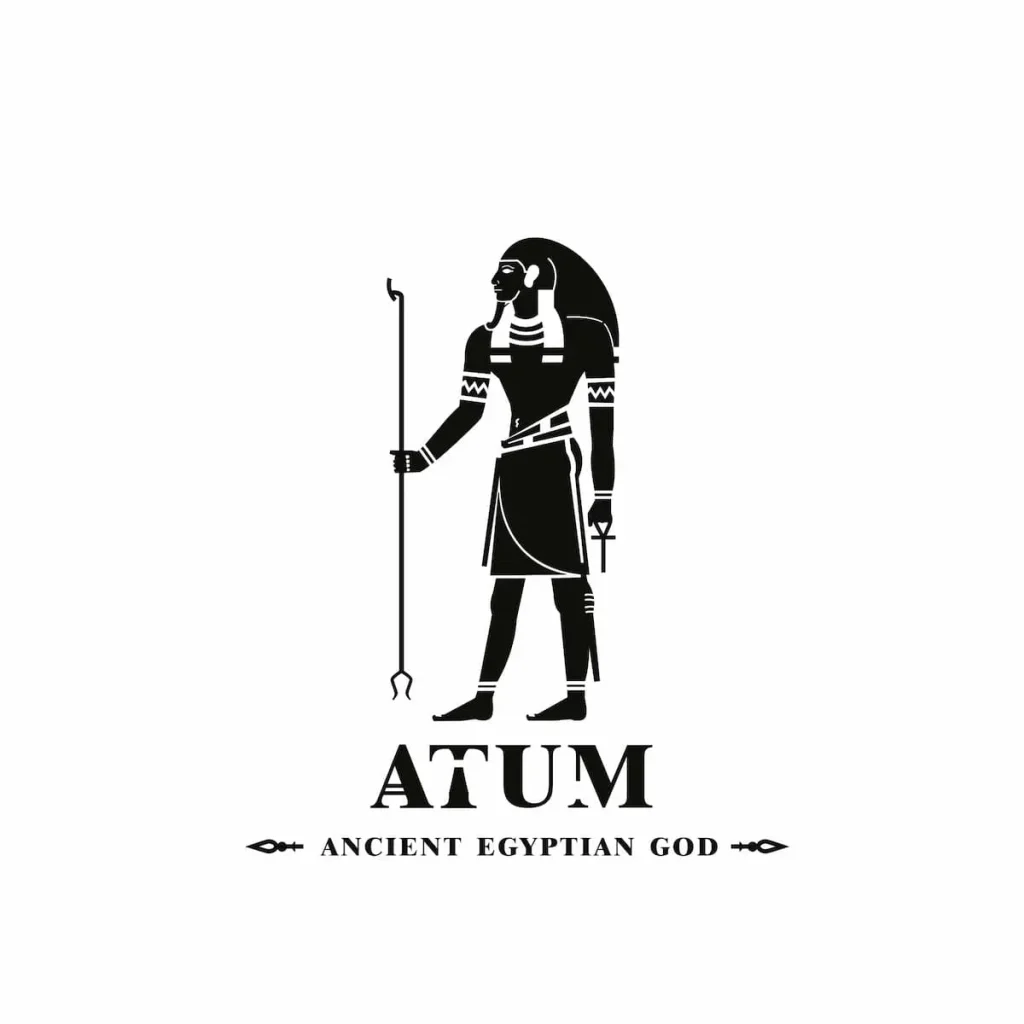
1. Origins of Atum
The story of Atum Egyptian God, finds its origin in the endlessly wide expanse of the primal waters of Nun, which is the void and the chaos before the act of creation was set in motion. It was from that infinity that the god manifested. Atum emerged out of the boundless world on the first mound of dirt, marking the beginning of the world where everything fell into position.
He was not the product of anyone or anything; rather, he was self-created. This is the reason why his name can be loosely translated as “the whole being” or “one who does not need for growth”. This notion that he sprang from nothing directly explains why the lord of order is considered to be the source of life and the supreme deity.
In the teachings of ancient Egypt, Atum was also closely tied to the sun. He was the setting sun, signifying that which has finished and that which has yet to commence. With increasing cunning, it was bound to Ra, the deity of the sun, to produce the dual god Atum-Ra, a representation of the unending solar both monthly and yearly cycles. Whereas Atum, as the setting sun, connoted totalness and completion, Ra, as the rising sun, evoked new beginnings and regeneration. Together embodied the Egyptians’ expressed conception of creation as something that repeats generation, destruction, and recovery indefinitely.
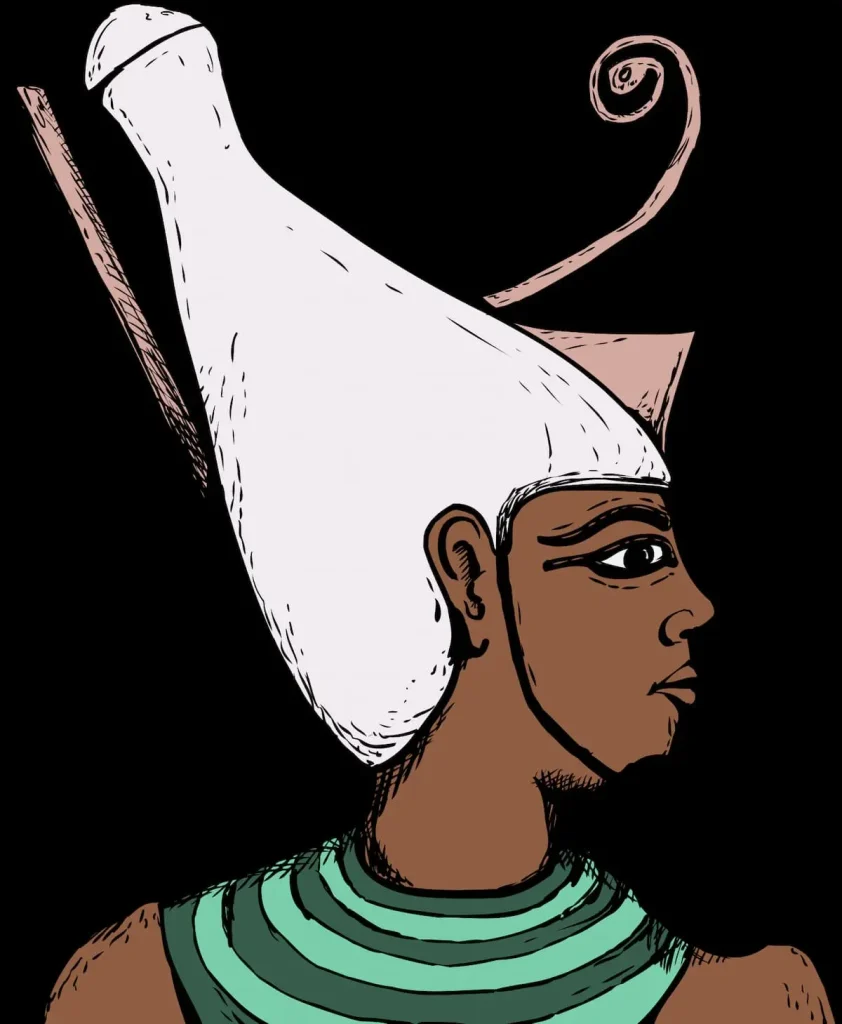
2. Atum, Egyptian God Symbol
In ancient Egyptian writing, Atum Ka was considered one of the most influential figures in the religious pantheon as he represented the modern conceptual picture of everything from ordered systems completing and arranging all the elemental forces of the universe down to matters yet to be created. In such moments, Atum could function both as an origin and an end, as well as the giver and taker of life.
Atum was primarily portrayed to be a man wearing the Great Crown, an ancient Coiled, the Royal Uraus, related to the primeval ocean, and the serpent represented his ‘’ego’’. This headdress reinforced the idea of his political and divine rule. Stretch the writing; it should be added that, in some aspects of Atum, as a snake-associate, he emblematized time and change, and in others he was aged in human features, which shows the onset of the night and the break of the pale week.
Numerical abstraction allows for better understanding, analysis, and processing of various statistical data without the need for numerical analysis or computations.
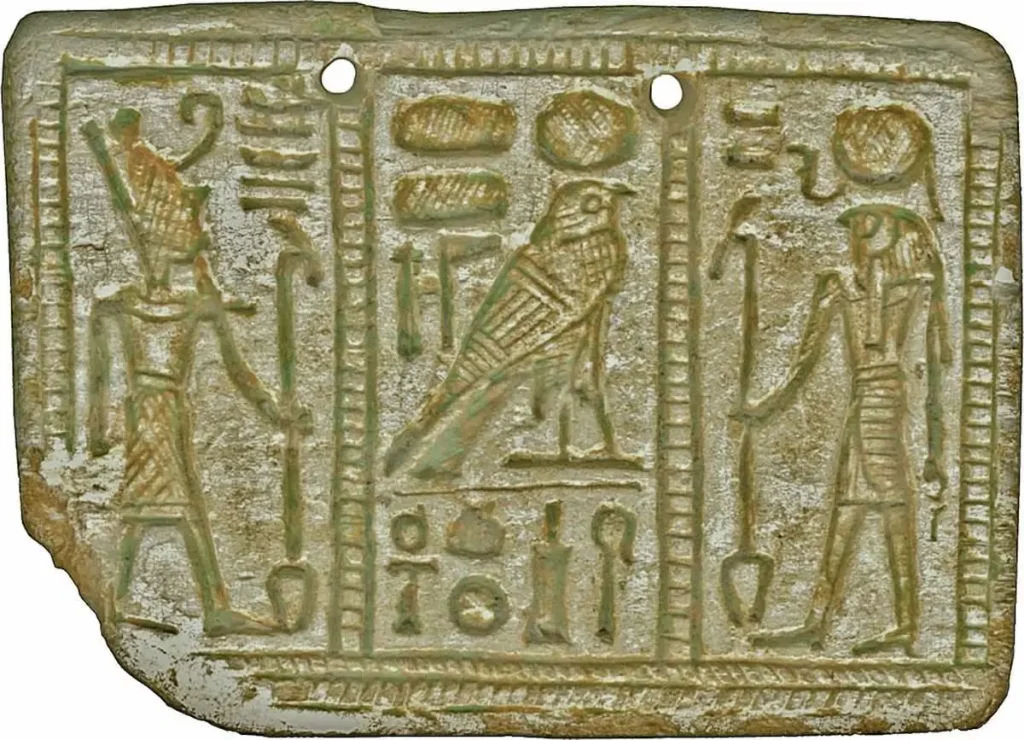
3. Atum in the Heliopolitan Creation Myth
The myth of creation by Atum centers around the element of Heliopolis, where this side of the deity is depicted as the first active principle that gave life to himself. Upon the emergence of Nun’s waters, he then gave birth to Shu (the air god) and Tefnut (the goddess of moisture) through copulation. In a different light, the act of generating these deities is inscribed in the ancient texts in two main symbolic gestures: some narrations claim the deities were either spat out or sneezed, while others maintain they were created through Atum’s mouth. Bearing in mind the themes of reproduction, strength, and the generative faculties of a body, however, it is mentioned that these deities were born from the elements of his breath, lips, or genitals.
From the two principles: sky Nut, and earth Geb, came Osiris, grandson of the Gods of Air and Moisture and Nut, and further relatives Isis, Set, and Nephthys. Those gods together formed the Ennead of Heliopolis, where this group of nine divinities was an explanation of how the universe, heavenly and human order came to exist.
By the account contained in this myth, not only was Atum revered as the original deity, but he was also indicated to be gods and men′s beginning. That is to say, all the divine lineages and all the natural powers were believed to have emanated from him.
🌟 Explore the World of Egyptian Gods and Goddesses
From the wisdom of Thoth to the protective power of Isis and the might of Ra,
The deities of Ancient Egypt shaped creation, kingship, and daily life. Discover their myths,
symbols, and timeless influence across history and spirituality.
Ra: Sun God and Creator |
Isis: Goddess of Magic & Healing |
Osiris: Lord of the Afterlife
4. Symbolism and Attributes of Atum
Some factors explain why the shield of Atum has a very narrow scope of meaning, only encompassing perfection, completion, wholeness, creation, and independence. One is that many other deities are described as having either been born from a god and goddess or having made it through such individuals, but only some or none can claim to be self-originated like Atum. As the god of creation out of nothing without any of the major characteristics that are prevalent in the bulk of the other deities, Atum was yet another type of god who promoted his own power and wholeness by virtue of invoking self-creation.
As for the Egyptian solar religion, Atum was thought to be the representative of the setting sun and signified the completion of the day; it represents the unchanging rhythm of life, which ends with the beginning of a new one. By the same token, while in Ra the sun, in accordance with whose laws everything is organized, signifies the rising sun and a beginning, the deities like Atum and Ra. The gods are not part of the directions and the dawn of history; it is the desire to wrap up and return the Universe to the state of unity that distinguishes the favorable combination of forces expressed by Other gods.
5. Atum, Egyptian God Powers
From all of the many gods within the Egyptian cosmogony, Atum was unique. He was a self-created deity who possessed extraordinary abilities that no other gods had. He was able to self-generate, which means he floated alone out of the primordial waters of Nun, and he had no parents or a creator. Such power, which roars when it is first thought of, sets forth the qualities of independence, wholeness, and the forces of the godhead behind the entire existence of the divinity.
He could also raise and further sustain all other gods, specifically the first gods Shu and Tefnut, by producing them in breath, spirit, or semen. These forms helped him in maintaining fertility, energy, as well as the spirit of existence. These are also the same situations that served in the continuation and strengthening of both the gods and humanity.
Also, Atum was troubled by the sun’s influence, in particular by the setting of the sun. Just like the sunset signified the end of a day, Atum was the end or completion of the circle of creation to ensure another start.
Truly, his capacities were most eccentric, combining metaphysical with divine spirituality. As the creator of the Heliopolitan gods, Atum, with his Ennead, ramified into every area of life and civilization. Except for order and balance in the personnel of the kings, from his creative power.
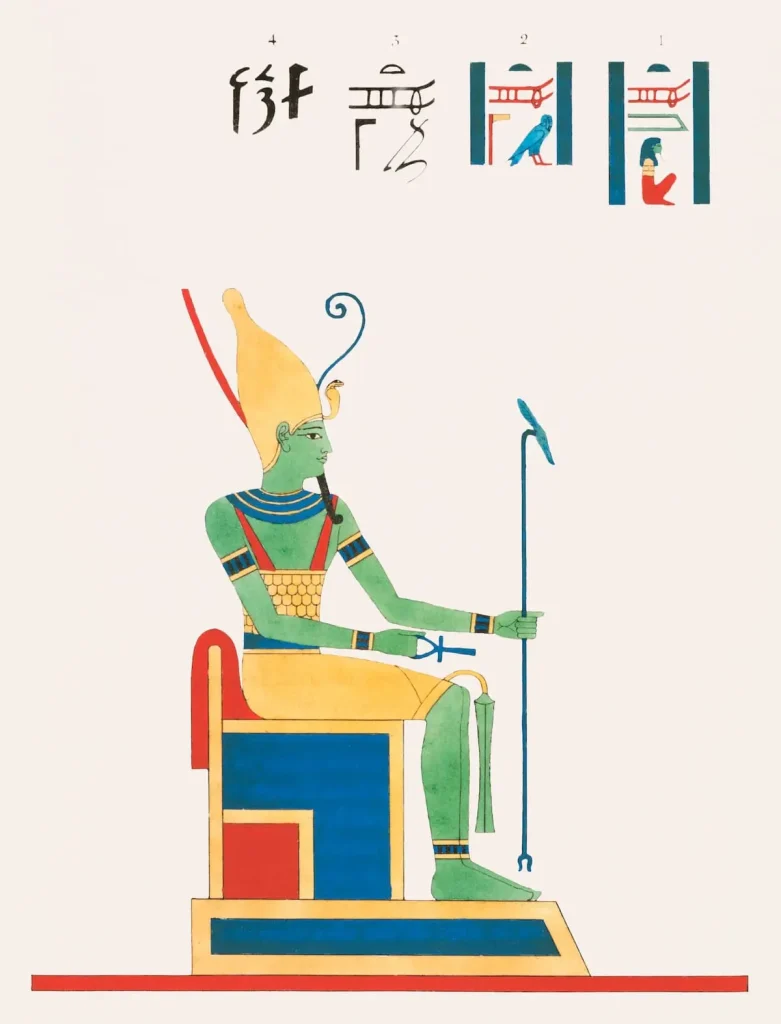
6. Worship and Temples of Atum
Worship of Atum takes root in the context of Heliopolis, which is one of the most distinguished religious centers of Ancient Egypt. In the first place, it should be pointed out that this was the spiritual home of the worldview, closely interlinked to the natural viewpoint version of Atum as a god who made himself on his own motion. The veneration of Atum was concentrated at the Great Temple of the Sunstone, from which he was drawn into religious beliefs linked with creation and leadership.
In addition, the worship of Atum is associated with the solar religion. In the course of time, he got assimilated with the sun god Ra, and the result was Atum-Ra. The same amalgamation brought in the emphasis on his aspect as the creator of the world with the rising sun and as the sun-disk which enters into horizon end of the day. Without this unity, Atum was the eternal life-death-reincarnation cycle.
On another hand, hymns, temple engravings, and rituals extolled the life of Atum, the source of justice, and the seed of the key of the Ennead. Offerings, invocations, and recitation, meanwhile, were carried out by priests to acknowledge Athum’s daily protector of Ma’at- the universal balance for harmony in the skies and on the Earth.
7. Atum in Ancient Egyptian Texts
The Egyptians are quite specific when talking about their ancient religious literature, particularly in the case of the Pyramid Texts and the Coffin Texts, when Atum would give the order. The funerary texts were among the first to appear and contain the recognition of Atum as the major assistant who initiated the beginning of the cycle of the god immortals and crystallized the continued life and the rational form of man. They appreciated life but saw that the world, in its cornerstone, was either the maker of life for the gods or the influences of humans as well.
However, nonetheless, Atum saw its own close connection to the Divine Right and authority. The kings, in some cases, were associated with Atum because they were regarded as a branch of the divine essence. They received the amount of the creative potential of Atum and obtained both the right and the order to rule. In a policy matter that Atum aided in the establishment of the head of the state, ensuring the King did not disturb the balance that is subject invocation of Ma’at.
Moreover, the references to Atum in the texts about the other world are quite frequent. In these contexts, he is often invoked in connection with protection and guidance. People thought that he would help the soul factor transit to another plane, which is said to be the peak of life and brings a new life altogether. As a creator of order, Reconstructed had been evacuated in that order: Atum was not only its principle, but also compacted the progression of advancing culture pathways.
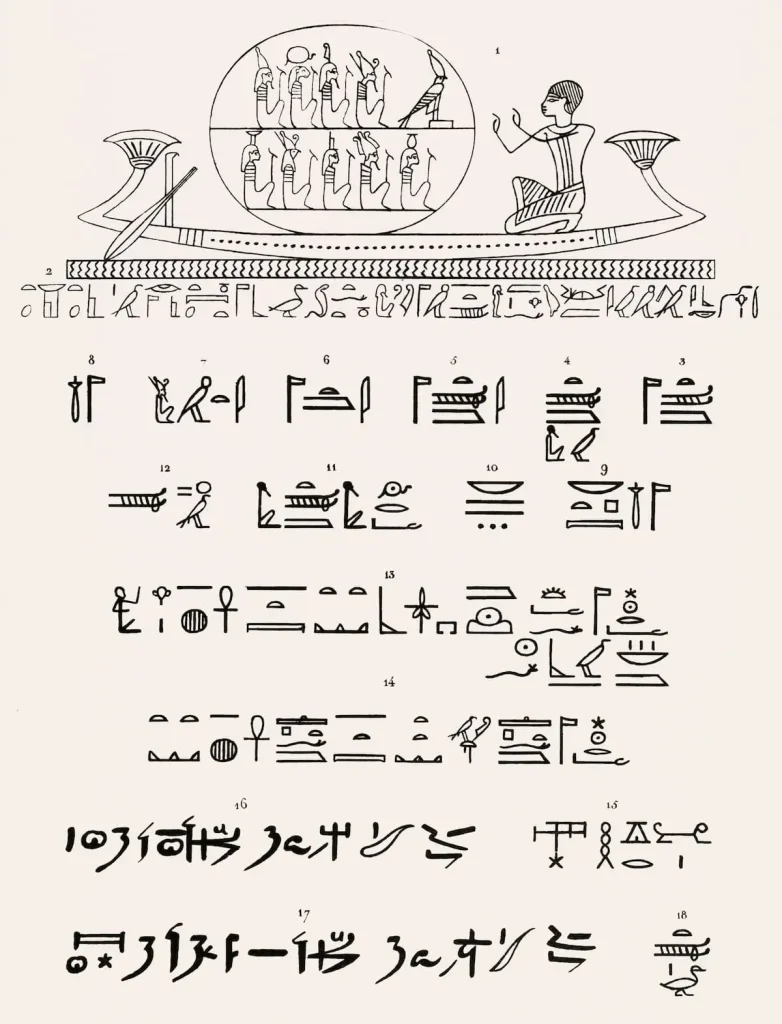
8. Philosophical and Theological Role
In the ancient Egyptian theology, Atum was not solely regarded as a creative deity; he was rather the epitome of wholeness and completion. For Atum is translated outright as ‘She who is all’, this referred to the duality that is emphasized as already existing before the world began and as existing within the womb of the gods.
It is noticeable that the name of Atum had ancient roots based on the sun-sunbelt. As the word Atum itself meant the setting sun, it stood for the end of everyday realities, their contents, and their subsequent renewal. Just like the sun dipped down into the land of the dead to return the next day, Atum served as imagery for the creation of the universe, then remodeled and eventually resurrected. Thus, his role was to bridge the gap between the beginning and the end and also between life, death, and reincarnation to a higher degree.
Lastly, he embodied the principles attributed to Ma’at. With the advent of Shu and Tefnut, Atum effected separation, evoking balance and life as well. Thus, he was contemplated not only as the origin of life but also as the everlasting mechanism fostering balance or beauty in outer space.
9. 10 Facts About Atum
-
Domain – Atum is the Egyptian god of creation, the sun, and wholeness.
-
Parents – He had no parents; he was self-created from the primordial waters of Nun.
-
Children – Atum produced Shu (air) and Tefnut (moisture), giving rise to the divine family known as the Ennead of Heliopolis.
-
Main Cult Center – His primary worship site was at Heliopolis, one of the most important religious centers in Ancient Egypt.
-
Symbols – Common symbols include the serpent, the double crown of Upper and Lower Egypt, and the sun.
-
Creation Myth – Atum is credited with beginning the process of creation by separating the sky and the earth through his children.
-
Solar Connection – He represented the setting sun, completing the cycle of day before renewal.
-
Divine Title – His name means “The Complete One”, reflecting his role as totality and perfection.
-
Theological Role – Atum embodied self-sufficiency, as he created the universe from himself alone.
-
Afterlife Significance – In funerary texts, Atum guided the deceased toward rebirth and eternal life.
10. Conclusion
The Egyptian theology is filled with the name Atum, and this mystic God Atum is omnipotent, but above everything, he’s believed to possess the power that facilitates human togetherness and spiritual connection that dominates every single inch of the world. This god emerged out of the water, chasing away the dark god of water, and from then began the creation of the gods, the world, life, and fulfillment for all.
Being the god “Which Comprehendeth the Limit” perfectly throws the stone-slab of contradiction to the understanding of Atem, as he was the quintessence, the first, and the ultimate; so he fits the Mental Picture of the enclosing sun that comes out from the very horizon of the dawn and then vanishes behind the horizon with the end of the day. His intercourse with the goddesses Shu and Tefnet would secure the nine gods formation serving as the most important balance and given maintenance of the cosmic order.
In fact, research on Atem is paramount in investigating the tenets of the Ancient Egyptians’ religion, both lateral and vertical, ancient, since one implies not only the emergence of substances but also their change, birth, death, and eternally looming gambit of reality. The tales from the Eastern Church about the god of light also call to mind the image of Egyptian theology: an ordered universe that is subject to change but will ultimately come to rest in wholeness.

